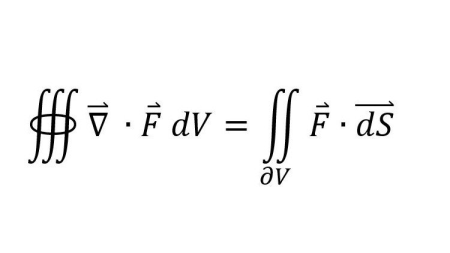Mathematical intuition behind Multivariable Calculus
- 06.06.2021
- 132

MP4 | Video: h264, 1280x720 | Audio: AAC, 44.1 KHz, 2 Ch
Genre: eLearning | Language: English + srt | Duration: 20 lectures (4h 13m) | Size: 5.61 GB
In this course Multivariable Calculus is explained by focusing on understanding the key concepts rather than learning the formulas and/or exercises by rote.
Multivariable Calculus
how to intuitively understand Multivariable Calculus by using the mathematics
Divergence theorem (how to prove it)
Stokes theorem (how to prove it)
Single Variable Calculus
The process of reasoning by using mathematics is the primary objective of the course, and not simply being able to do computations. Besides, interesting proofs will be given, such as the Gauss and Stokes theorems proofs.
The prior knowledge requirement is Single variable Calculus (even without a great mastery of it).
I will list some of the most important concepts that we will see here in the following.
partial differentiation. The partial derivative generalizes the notion of the derivative to higher dimensions. A partial derivative of a multivariable function is a derivative with respect to one variable with all other variables held constant. Partial derivatives may be combined in interesting ways to create more complicated expressions of the derivative. For example, in vector calculus (which we will see), the "del" operator is used to define the concepts of gradient, divergence, and curl in terms of partial derivatives. A matrix of partial derivatives, the Jacobian matrix, may be used to represent the derivative of a function between two spaces of arbitrary dimension. Differential equations containing partial derivatives are called partial differential equations or PDEs. These equations are generally more difficult to solve than ordinary differential equations, which contain derivatives with respect to only one variable (PDEs are not discussed in this course).
Multiple integration. The multiple integral extends the concept of the integral to functions of any number of variables. Double and triple integrals may be used to calculate areas and volumes of regions in the plane and in space.
The surface integral and the line integral are used to integrate over curved manifolds such as surfaces and curves. We will see these concepts.
I am available for questions, which I could answer by (possibly) uploading new content to the course, namely videos containing the solution.
Students who are interested in mathematical reasoning and derive the most important concepts of Multivariable Calculus
DOWNLOAD
uploadgig
https://uploadgig.com/file/download/655df05B796244fD/ihRI7981__Mathematical_intuition_behind_Multivariable_Calculus.part1.rar
https://uploadgig.com/file/download/Ad9f246826a677D8/ihRI7981__Mathematical_intuition_behind_Multivariable_Calculus.part2.rar
https://uploadgig.com/file/download/7F5a85Bc6bc14f4a/ihRI7981__Mathematical_intuition_behind_Multivariable_Calculus.part3.rar
https://uploadgig.com/file/download/38aCA3f5439ec899/ihRI7981__Mathematical_intuition_behind_Multivariable_Calculus.part4.rar
https://uploadgig.com/file/download/dab1Fe5ed1b05d3A/ihRI7981__Mathematical_intuition_behind_Multivariable_Calculus.part5.rar
https://uploadgig.com/file/download/1C372f3D830242d2/ihRI7981__Mathematical_intuition_behind_Multivariable_Calculus.part6.rar
rapidgator
https://rapidgator.net/file/ed74e066a47e849775ba50faba3dd53a/ihRI7981__Mathematical_intuition_behind_Multivariable_Calculus.part1.rar.html
https://rapidgator.net/file/a95fb3b58d45a8d4b821e75062d3dd4e/ihRI7981__Mathematical_intuition_behind_Multivariable_Calculus.part2.rar.html
https://rapidgator.net/file/80b6581a48ff609f344925ff6f320d12/ihRI7981__Mathematical_intuition_behind_Multivariable_Calculus.part3.rar.html
https://rapidgator.net/file/39ad7aac9a799ee3a2d688dfbda14d4a/ihRI7981__Mathematical_intuition_behind_Multivariable_Calculus.part4.rar.html
https://rapidgator.net/file/d705758847f84320c9a05104483eeb52/ihRI7981__Mathematical_intuition_behind_Multivariable_Calculus.part5.rar.html
https://rapidgator.net/file/fa724b8e59d37ffbae18d79f564f4d5c/ihRI7981__Mathematical_intuition_behind_Multivariable_Calculus.part6.rar.html
nitro
https://nitro.download/view/3DDA009788842DB/ihRI7981__Mathematical_intuition_behind_Multivariable_Calculus.part1.rar
https://nitro.download/view/245D803CB27F1B8/ihRI7981__Mathematical_intuition_behind_Multivariable_Calculus.part2.rar
https://nitro.download/view/2B000FCD344D1D4/ihRI7981__Mathematical_intuition_behind_Multivariable_Calculus.part3.rar
https://nitro.download/view/465E0C83BCC77CD/ihRI7981__Mathematical_intuition_behind_Multivariable_Calculus.part4.rar
https://nitro.download/view/D69C81B13ED388E/ihRI7981__Mathematical_intuition_behind_Multivariable_Calculus.part5.rar
https://nitro.download/view/4CB2B32B2A64518/ihRI7981__Mathematical_intuition_behind_Multivariable_Calculus.part6.rar